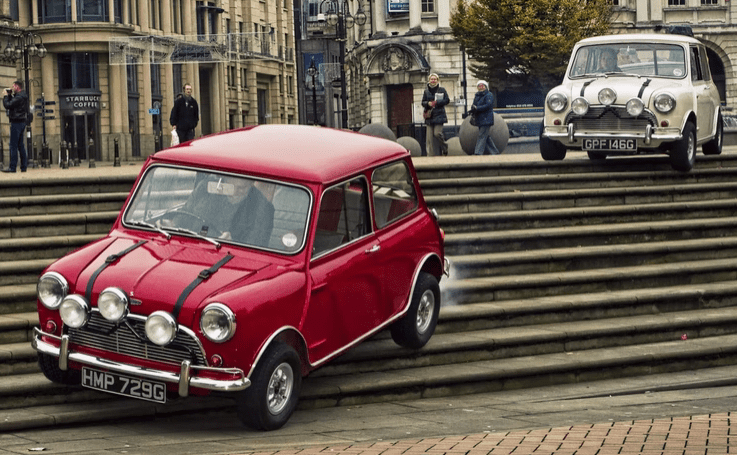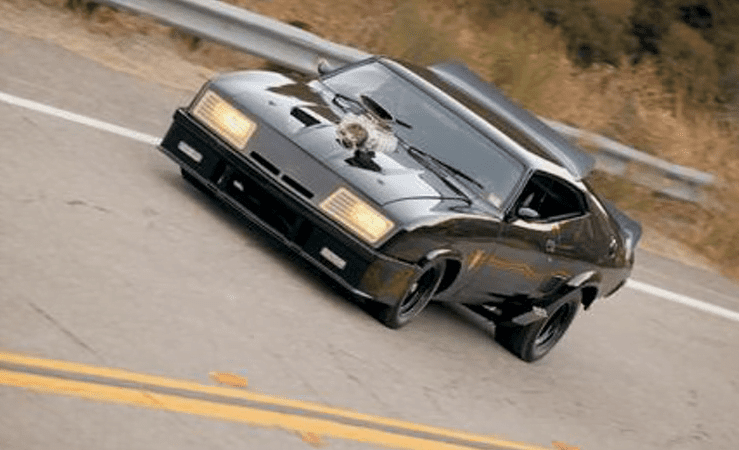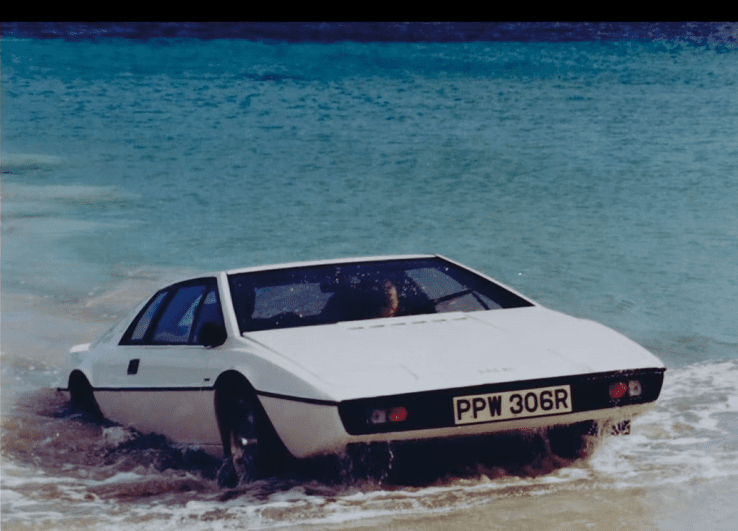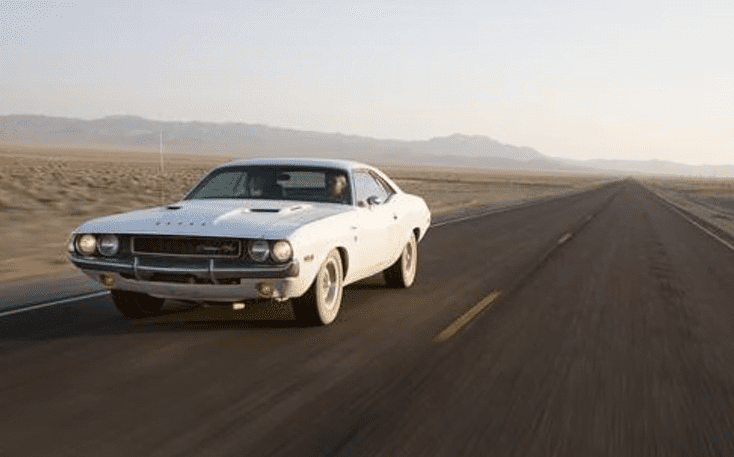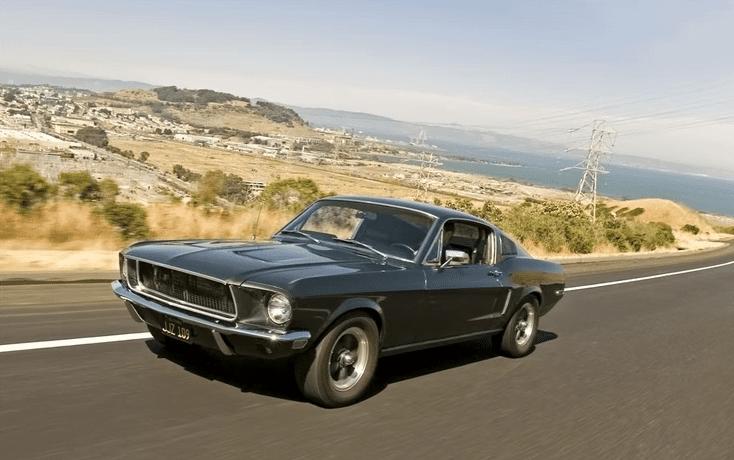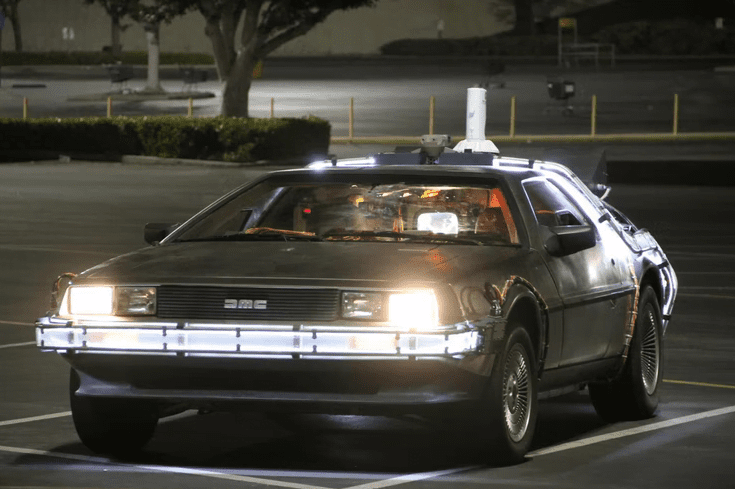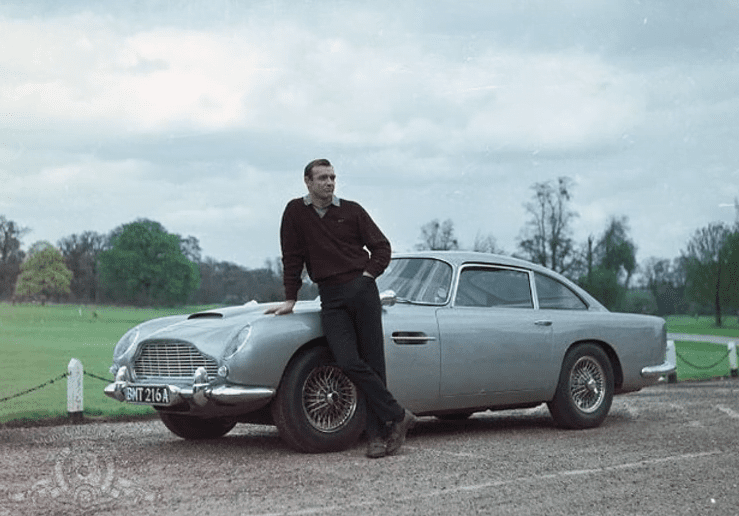From high-octane action flicks to heartwarming classics, movies have often showcased iconic cars that have become as legendary as the characters themselves. These automotive stars have captured the imaginations of audiences worldwide and left an indelible mark on popular culture. Whether it’s the sleek and stylish James Bond Aston Martin or the powerful and menacing Batmobile, these cars have become symbols of excitement, adventure, and pure automotive fascination. In this article, we’ll take a thrilling ride down memory lane as we explore 10 iconic cars from movies that have become true legends in their own right.
Buckle up and get ready for a cinematic journey through the most unforgettable automotive stars to grace the silver screen.
10-Mini “The Italian job”
In 1969, the Mini was already a beloved and popular car, especially in Europe, but it was the iconic film “The Italian Job” that catapulted the Mini into legendary status. This heist film, directed by Peter Collinson, not only showcased the talents of renowned actors like Michael Caine and Noel Coward but also featured a fleet of eye-catching Minis that stole the hearts of audiences around the world.
The charm and nimble nature of the Mini were perfectly suited for the thrilling escapades depicted in “The Italian Job.” The film follows a group of charming and daring thieves as they plan and execute a gold heist in Italy. While the stellar performances by Caine and Coward captivated audiences, it was the fleet of Minis that became the true stars of the movie.
In the film, the Minis showcased their incredible maneuverability and agility, effortlessly darting through narrow streets, racing up and down staircases, and even driving through sewer systems. Their compact size and exceptional handling made them the perfect getaway vehicles, allowing the thieves to outsmart their pursuers at every turn.
“The Italian Job” also highlighted the Mini’s racing pedigree, with references to the car’s impressive wins in the mid-sixties Monte Carlo Rally. The film’s exhilarating chase sequences showcased the Mini’s speed and nimbleness, solidifying its reputation as a formidable competitor on both the rally stages and the silver screen.
The popularity of “The Italian Job” played a significant role in cementing the Mini’s status as a cultural icon. The film not only showcased the car’s distinctive design, characterized by its compact size, rounded curves, and iconic front grille but also captured the imagination of audiences with its thrilling and memorable scenes involving the Minis.
Following the film’s release, the Mini experienced a surge in popularity, becoming a symbol of British automotive excellence and a true icon of the swinging sixties. Its influence extended far beyond the movie screen, inspiring a generation of car enthusiasts and leaving an indelible mark on popular culture.
Today, the Minis from “The Italian Job” are revered as iconic symbols of automotive history and cultural significance. Their memorable appearances in the film continue to captivate audiences, solidifying their place as cherished classics and reminding us of the timelessness and enduring appeal of the Mini brand.
“The Italian Job” demonstrated that sometimes it’s not just the actors who steal the show, but also the unforgettable automotive stars that leave an indelible mark on our hearts and minds. The Minis from the film will forever hold a special place in the annals of cinema and automotive history, standing as a testament to the enduring popularity and legendary status of these beloved small cars.
9-Ford Falcon “Mad Max”
Australia’s automotive landscape in the 1960s and 1970s was a hotbed of power and performance, driven by a shared passion for muscle cars that rivaled that of their American counterparts. Among the impressive lineup of Australian-made muscle machines of that era, the Ford Falcon emerged as a true automotive legend. Its third generation, specifically the Falcon XB GT, became the canvas for an iconic transformation that would forever etch its name in cinema history.
The Falcon XB GT, powered by a robust 351-cubic inch V8 engine, was already a formidable force on Australian roads. With its muscular presence and powerful performance, it embodied the spirit of raw automotive exhilaration. However, it was the film “Mad Max” that elevated the Falcon XB GT to an entirely new level of coolness and fame.
In the dystopian world of “Mad Max,” the filmmakers sought to create a vehicle that would match the intensity and grit of the film’s post-apocalyptic setting. They turned to the Falcon XB GT, giving it a radical makeover to transform it into the legendary “Pursuit Special” or “Interceptor.” This modified version of the Falcon became an integral part of the film, serving as the high-octane ride of the protagonist, Max Rockatansky, portrayed by Mel Gibson.
The modifications made to the Falcon XB GT for its on-screen transformation were nothing short of remarkable. The car received a menacing black exterior finish, aggressive bodywork, and a host of modifications to enhance its performance and visual impact. From the iconic supercharger protruding through the hood to the striking spoilers and menacing stance, the “Interceptor” instantly became a symbol of automotive badassery.
The Falcon XB GT “Pursuit Special” captured the imaginations of audiences worldwide. Its appearance in the film showcased its powerful presence and the sheer brutality of its performance. The combination of the Falcon’s muscular heritage and the aggressive modifications created a truly unforgettable machine that perfectly embodied the dystopian world of “Mad Max.”
Today, the Falcon XB GT “Pursuit Special” remains an enduring symbol of automotive cinema. Its transformation for “Mad Max” solidified its status as a cultural icon, celebrated not only for its role in the film but also for its representation of Australian automotive power and ingenuity.
The Falcon XB GT, both in its original form and as the “Pursuit Special,” showcases the spirit of Australia’s muscle car era and the desire for power and performance that captivated enthusiasts of the time. Its enduring legacy serves as a testament to the lasting impact of Australian-made muscle cars and their place in the hearts of automotive enthusiasts around the world.
8-Chevrolet Camaro “Transformers”
Bumblebee, the beloved Autobot from the “Transformers” franchise, has captured the hearts of audiences with his endearing personality, unwavering loyalty, and remarkable ability to transform into various vehicles. While his film debut showcased him as a 1977 Camaro, Bumblebee’s desire to blend in and his innate ability to adapt led him to change his appearance to a 2009 Camaro. However, his transformations are not limited to just cars; Bumblebee has the incredible capability to morph into a towering and powerful giant robot.
In his robot form, Bumblebee becomes a formidable force, ready to battle alongside his Autobot comrades against the evil Decepticons. Standing tall and proud, he wields incredible strength, advanced weaponry, and the agility to maneuver swiftly in combat. As a giant robot, Bumblebee not only symbolizes his protective nature and unwavering dedication to the Autobot cause but also represents the awe-inspiring spectacle of technology and transformation.
The ability to change from a sleek and stylish Camaro to a colossal robot is an integral part of Bumblebee’s character. His transformations highlight the core theme of the “Transformers” franchise, emphasizing the awe-inspiring power of technology and the concept of metamorphosis. Bumblebee’s capability to seamlessly shift between forms showcases the wonders of mechanized adaptation and captures the imagination of audiences, young and old.
Beyond the Camaro and giant robot forms, Bumblebee has exhibited the ability to transform into other vehicles throughout the “Transformers” series. From a compact Volkswagen Beetle to a sleek sports car or even a heavy-duty truck, Bumblebee’s transformations allow him to blend into his surroundings, adapt to various missions, and surprise both allies and enemies alike.
The versatility and adaptability of Bumblebee’s transformations serve as a metaphor for the human capacity to evolve and change in the face of adversity. Just like Bumblebee, who seamlessly alters his form to suit the situation, we too can learn to adapt and transform ourselves to overcome challenges and embrace new opportunities.
Bumblebee’s transformations into both cars and a towering robot symbolize the power of change, the awe-inspiring capabilities of technology, and the indomitable spirit of heroism. Whether as a 1977 Camaro, a 2009 Camaro, or a giant robot, Bumblebee’s iconic presence in the “Transformers” franchise continues to captivate audiences and inspire the belief that transformation is not only possible but also an essential part of our journey towards growth and self-discovery.
7-Lotus Esprit “The spy who loved me”
The 1977 Lotus Esprit holds a special place in the history of James Bond’s iconic rides, showcasing the perfect blend of sleek design, cutting-edge gadgets, and sheer audacity. While its affectionate nickname “Wet Nellie” may evoke a sense of whimsy, this remarkable vehicle proves to be far more than meets the eye, with its extraordinary capabilities that extend beyond land and into the depths of the ocean.
Equipped with an array of ingenious gadgets, the 1977 Lotus Esprit transforms into the ultimate spy vehicle, capable of thwarting even the most determined villains. Behind its elegant exterior lies a range of hidden surprises designed to help James Bond escape perilous situations. To deter pursuers, the Esprit is armed with cement spewing canons, ensuring that anyone foolish enough to follow too closely will face an immediate hindrance. For more dramatic confrontations, the rear trunk of the Esprit reveals a missile launch pad, ready to be deployed when Bond’s mission calls for an explosive response. And should the need arise for a quick getaway, a mine dispersion unit further enhances the Esprit’s defensive capabilities.
However, the most remarkable feature of the 1977 Lotus Esprit is its ability to transform into a fully functional submarine. With the push of a button, Bond’s stylish sports car seamlessly transitions into a subaquatic marvel, submerging into the depths of the ocean. Its sleek lines and hydrodynamic design allow it to navigate underwater with grace and speed, enabling Bond to pursue or escape his adversaries in a realm they least expect.
The inclusion of a submarine capability in the Lotus Esprit showcases the extravagant and imaginative nature of the James Bond universe. It epitomizes the franchise’s penchant for blending cutting-edge technology with exhilarating action, propelling Bond into extraordinary situations that push the boundaries of what is possible.
The 1977 Lotus Esprit’s dual nature as both a sophisticated sports car and a versatile submarine encapsulates the spirit of adventure and innovation that defines the James Bond series. Its appearance in the film franchise not only cemented its status as an iconic cinematic vehicle but also captured the imagination of audiences worldwide, forever associating the Lotus Esprit with the daring exploits of the world’s most famous secret agent.
So, next time you see a sleek 1977 Lotus Esprit, remember that beneath its refined exterior lies a world of gadgets and surprises, ready to take on any challenge and propel its driver into a realm of action and intrigue.
6-Dodge Challenger R/T “Vanishing Point”
In the high-octane film “Vanishing Point,” the raw and intense nature of the story is perfectly matched by the powerful presence of the 1970 Dodge Challenger R/T 440 Magnum, driven by Barry Newman’s character, Kowalski. This iconic muscle car becomes more than just a vehicle; it becomes a symbol of Kowalski’s determination, resilience, and his relentless pursuit of freedom.
As an ex-cop and a Vietnam war hero, Kowalski’s decision to embark on a daring cross-country journey from Denver to San Francisco in less than nine hours is a testament to his rebellious spirit and his desire to break free from societal constraints. The choice of the 1970 Dodge Challenger R/T 440 Magnum as his steed reflects his need for a vehicle that matches his fierce and uncompromising personality.
The Dodge Challenger R/T 440 Magnum, with its aggressive styling and muscular stance, exudes an aura of power and speed. Under the hood, the formidable 440 cubic-inch V8 engine delivers jaw-dropping performance and a thunderous roar that resonates with the character of Kowalski himself. It symbolizes his defiance and his relentless drive to overcome any obstacle in his path.
Throughout the film, the Challenger becomes a central figure, capturing the essence of the freedom and rebellion associated with the American muscle car era. Its acceleration, speed, and unruly behavior on the open road mirror Kowalski’s own journey of self-discovery and defiance against societal norms.
The 1970 Dodge Challenger R/T 440 Magnum, in its sleek and menacing form, represents a bygone era of automotive power and excitement. It embodies the spirit of adventure, the pursuit of freedom, and the thrill of pushing the limits. In “Vanishing Point,” the Challenger becomes a character in its own right, an extension of Kowalski’s persona and an emblem of his unyielding determination.
The film’s gritty and intense atmosphere is mirrored by the brute force and audacity of the Dodge Challenger R/T 440 Magnum, resulting in a captivating cinematic experience. Its presence on the screen serves as a reminder of the unbreakable bond between man and machine, the indomitable spirit of those who dare to defy, and the everlasting allure of classic muscle cars that continue to captivate audiences to this day.
5-Volkswagen Beetle “Herbie”
The Volkswagen Beetle, affectionately known as the Bug, had already achieved iconic status by the time it made its debut on the silver screen in 1968 in the film “The Love Bug.” This lovable and animated car, with its endearing personality and distinctive appearance, quickly captured the hearts of audiences and became one of the most recognizable movie cars of all time.
“The Love Bug” introduced audiences to Herbie, a charming and mischievous Volkswagen Beetle with a mind of its own. This whimsical tale follows the adventures of Herbie and its driver, Jim Douglas, as they take on the racing world and prove that even a modest car can achieve greatness. The film’s heartwarming story and Herbie’s infectious personality resonated with audiences, making it an instant hit.
Herbie’s popularity continued to soar over the years, leading to several sequels and spin-offs. One of the most recent appearances of Herbie was in the 2005 film “Herbie: Fully Loaded,” starring Lindsay Lohan. The film breathed new life into the iconic character, introducing a new generation of viewers to the lovable Bug and its magical abilities.
Herbie’s enduring appeal lies in its relatability and charm. Despite being an inanimate object, the car takes on a personality of its own, displaying a range of emotions and endearing quirks that make it feel like a true companion. From its playful antics to its unwavering loyalty, Herbie embodies the spirit of adventure, friendship, and determination.
The Volkswagen Beetle, as portrayed by Herbie, has become a symbol of nostalgia and childhood wonder. Its timeless design and association with the beloved character have solidified its place in popular culture. Even those who may not be car enthusiasts will likely recognize the iconic white Beetle with the red, white, and blue racing stripes.
Through its appearances in various films, including “Herbie: Fully Loaded,” the Volkswagen Beetle continues to captivate audiences and evoke feelings of joy, nostalgia, and a sense of whimsy. Its endearing presence on the silver screen serves as a reminder that even the humblest of cars can have a big impact and leave an indelible mark on both the cinematic landscape and the hearts of viewers worldwide.
4-Dodge Charger “The Dukes of Hazzard”
The General Lee, the iconic car from the television series “The Dukes of Hazzard,” undeniably left an indelible mark on popular culture. This vibrant orange 1969 Dodge Charger, adorned with the Confederate flag, became a symbol of high-octane fun and daring adventures. While the TV show and its premise may have been simple, the General Lee’s popularity soared, becoming a star in its own right.
“The Dukes of Hazzard” captivated audiences for six seasons, and the General Lee played a significant role in its success. The car became synonymous with the show’s exhilarating car chases, daring stunts, and the high-flying jumps that left viewers on the edge of their seats. Its unique paint scheme, distinctive horn sound, and memorable “01” decal on the doors made it instantly recognizable.
While Catherine Bach’s portrayal of Daisy Duke in her iconic shorts undoubtedly added to the show’s appeal, the General Lee became the true standout. Its wild antics and thrilling on-screen presence fueled the show’s popularity and made it a favorite among audiences of all ages.
The General Lee’s fame transcended the small screen when “The Dukes of Hazzard” made its jump to the big screen in 2005. The film adaptation revived interest in the iconic Charger, once again propelling the General Lee into the limelight. Fans of the show and newcomers alike were treated to exhilarating car chases and gravity-defying stunts, paying homage to the spirit of the original television series.
While the General Lee may have been primarily associated with its television roots, its timeless appeal and larger-than-life persona resonated with audiences both on and off the screen. The car’s popularity serves as a testament to the enduring love affair between audiences and powerful, charismatic automotive icons.
Beyond the controversy surrounding the Confederate flag adorning the General Lee, it remains an undeniable cultural phenomenon that has left an indelible mark on the entertainment industry. Its vibrant presence, daredevil stunts, and rebellious spirit continue to captivate the imaginations of fans, reminding us that sometimes, it’s the vehicles themselves that become the true stars of the show.
The General Lee stands as a testament to the power of a single car in captivating audiences and becoming an enduring symbol of fun, adventure, and a touch of Southern charm. Its journey from the small screen to the big screen exemplifies the timeless appeal and impact that iconic cars can have on popular culture, forever etching their names into the annals of automotive and entertainment history.
3-Ford Mustang 390Gt “Bullit”
In the realm of coolness, few movies can match the timeless appeal of “Bullitt,” featuring the incomparable Steve McQueen. Known for his effortless charisma and love for all things fast and furious, it comes as no surprise that the car he drove had to be as cool as he was. Enter the iconic Ford Mustang, which became an emblem of raw power and exhilarating action in the film’s legendary chase scene.
To bring the adrenaline-pumping chase sequence to life, two identical Mustangs were used during filming. One of these cars met its demise shortly after shooting, succumbing to the demands of the rigorous stunts and high-speed pursuits. However, the fate of the surviving Mustang has since become a topic of intrigue and speculation.
According to rumors that have circulated for years, the surviving Bullitt Mustang has been hidden away in a barn somewhere in the picturesque Ohio River Valley. This enigmatic piece of automotive history has become the stuff of legend, captivating the imaginations of car enthusiasts and film aficionados alike. Its rumored existence evokes a sense of mystery and nostalgia, drawing parallels to the allure of lost treasures waiting to be discovered.
The Bullitt Mustang represents more than just a car; it symbolizes the essence of “cool.” Its sleek, muscular design and powerful V8 engine perfectly matched McQueen’s persona and the gritty atmosphere of the film. The intense chase scenes through the streets of San Francisco showcased the Mustang’s exceptional performance, leaving an indelible mark on cinematic history.
“Bullitt” and its iconic car chase have become a benchmark of coolness, embodying the spirit of rebellion, freedom, and the pursuit of justice. The film’s enduring popularity and the aura surrounding the surviving Bullitt Mustang serve as a testament to the lasting impact of both the actor and the car.
While the whereabouts of the surviving Bullitt Mustang may remain shrouded in mystery, its legacy lives on. Its presence, even in rumor and speculation, continues to captivate enthusiasts who are drawn to the allure of cinematic history and the iconic cars that have graced the silver screen.
The Bullitt Mustang stands as a testament to the eternal appeal of Steve McQueen, the epitome of cool, and the enduring power of the Ford Mustang brand. As long as the legend of the surviving Bullitt Mustang persists, it will remain a symbol of the pursuit of greatness, the thrill of the chase, and the undying fascination with all things cool and extraordinary.
2-De Loreon DMC 12 “Back to the future”
The “Back to the Future” film series captivated audiences worldwide with its blend of science fiction, adventure, and heartfelt storytelling. At the heart of these blockbuster movies was an extraordinary vehicle that captured the imagination of viewers—the DeLorean time machine, ingeniously invented by the eccentric Dr. Emmett Brown.
The DeLorean, originally known as a stylish sports car in its own right, was transformed into an iconic time machine, instantly recognizable with its stainless steel body, gull-wing doors, and distinct appearance. Dr. Emmett Brown, portrayed by Christopher Lloyd, masterfully repurposed the DeLorean into a revolutionary invention that allowed for time travel.
The concept of time travel had long fascinated audiences, and the DeLorean time machine became the perfect embodiment of that fascination. With its flux capacitor and the power of plutonium, the DeLorean had the ability to transport its occupants to different eras and alter the course of history.
Throughout the “Back to the Future” trilogy, the DeLorean time machine served as more than just a mode of transportation. It became a symbol of adventure, hope, and the power of human ingenuity. From Marty McFly’s thrilling escapades in the past and future to the race against time to set history right, the DeLorean represented the incredible possibilities that awaited those brave enough to step into the unknown.
The DeLorean time machine became synonymous with the “Back to the Future” franchise, leaving an indelible mark on popular culture. Its striking appearance, enhanced by the futuristic modifications, resonated with audiences of all ages, becoming an enduring symbol of imagination and technological wonder.
Even outside the realm of the movies, the DeLorean time machine continues to captivate enthusiasts and fans, representing a unique blend of automotive design and the limitless potential of scientific discovery. Its iconic status has propelled it to become a cherished symbol of nostalgia and a testament to the enduring power of the “Back to the Future” films.
The DeLorean time machine, brought to life by the imaginative minds of the filmmakers and the legendary performance of Christopher Lloyd, remains an integral part of cinematic history. It serves as a reminder of the magic that can be found in storytelling, the power of dreams, and the belief that even the most ordinary objects can become extraordinary when placed in the hands of visionaries.
1- Aston Martin DB5 “Goldfinger”
When it comes to iconic movie cars, few vehicles can rival the timeless allure of the 1964 Aston Martin DB5 driven by James Bond in “Goldfinger.” This elegant British sports car, even without any spy modifications, is a work of art in its own right, exuding luxury, style, and undeniable sophistication. However, it is the remarkable special effects and innovative gadgets that have catapulted the DB5 into the pantheon of the most beloved movie cars of all time.
In “Goldfinger,” the Aston Martin DB5 becomes more than just a means of transportation; it transforms into a formidable weapon and an essential tool for James Bond’s espionage adventures. Equipped with an arsenal of cutting-edge gadgets, the DB5 captivated audiences with its array of cool tricks that seemed straight out of a spy’s wildest dreams. The inclusion of gadgets such as the ram bumper, machine guns, ejector seat, smoke screen, oil-slick sprayer, and more elevated the DB5 to an extraordinary level of sophistication and excitement.
Looking back on the Aston Martin DB5 from today’s perspective, one feature that stands out as particularly interesting is the map screen, which can be seen as a foreshadowing of the navigation systems commonly found in modern vehicles. While this may seem like a small detail compared to the car’s more flamboyant gadgets, it demonstrates the forward-thinking nature of the filmmakers and their ability to envision technology that would become a reality decades later.
The Aston Martin DB5’s enduring appeal lies not only in its stunning design and performance but also in the way it epitomizes the suave and debonair nature of James Bond himself. The car represents the perfect union of elegance and power, reflecting the character’s ability to seamlessly navigate through danger and intrigue with style and sophistication.
Over the years, the Aston Martin DB5 has become synonymous with the James Bond franchise, appearing in subsequent films and becoming an iconic symbol of the legendary spy himself. Its timeless design, combined with the fantasy of its gadgets, has solidified its place in cinematic history and in the hearts of fans worldwide.
As we reflect on the Aston Martin DB5’s legacy, we recognize its significance not only as a stunning automobile but also as a symbol of innovation, adventure, and the enduring appeal of the James Bond franchise. It represents the perfect blend of classic style and futuristic imagination, captivating audiences and reminding us of the magic that can be created when imagination and engineering come together in perfect harmony.
FAQ: Movie Cars
What is the most famous movie car?
The most famous movie car is arguably the DeLorean time machine from the “Back to the Future” trilogy. The iconic stainless steel car equipped with a flux capacitor and time travel capabilities became a cultural phenomenon and is instantly recognizable worldwide.
What car was used in the “James Bond” movies?
The “James Bond” movies have featured various cars throughout the franchise. The most famous car associated with James Bond is the Aston Martin. Several models from Aston Martin, including the DB5, DBS, and DB10, have been prominently featured in multiple Bond films.
Which car is associated with the “Fast and Furious” series?
The “Fast and Furious” series is known for its high-octane car-centric action and features a wide range of cars. However, the most iconic car from the franchise is arguably the orange 1995 Mitsubishi Eclipse driven by the character Brian O’Conner, played by Paul Walker, in the first film.
What car is featured in “The Italian Job” movie?
In the original 1969 “The Italian Job” movie, the iconic cars featured are the red, white, and blue Mini Coopers. These compact British cars were used for the heist sequences and became synonymous with the film.
Which car is the “Batmobile”?
The “Batmobile” refers to the fictional vehicle driven by Batman in the DC Comics and subsequent movie adaptations. The design of the Batmobile has evolved over the years, with each iteration having its unique features and characteristics depending on the specific Batman movie or TV series.
What car is associated with the “Transformers” movies?
In the “Transformers” movies, the Autobot known as Bumblebee is associated with the Chevrolet Camaro. Bumblebee transforms into a yellow and black Camaro, becoming an iconic character in the franchise.
Which car is featured in “Gone in 60 Seconds”?
In the 2000 movie “Gone in 60 Seconds,” the featured car is a 1967 Ford Mustang Shelby GT500, code-named “Eleanor.” The high-performance muscle car plays a central role in the film’s plot as the ultimate target of a group of car thieves.
What car is used in the “Ghostbusters” movies?
The car used in the “Ghostbusters” movies is a modified 1959 Cadillac Miller-Meteor ambulance called the “Ecto-1.” It is equipped with various ghost-catching devices and serves as the iconic vehicle for the team of ghost hunters in the films.
Which car is associated with the “Mad Max” movies?
In the “Mad Max” movies, the main character Max Rockatansky drives a customized, post-apocalyptic vehicle known as the “Interceptor.” The Interceptor is a modified 1973 Ford XB Falcon GT Coupe that Max uses to navigate the desolate wastelands.
What car is featured in the “Smokey and the Bandit” movie?
In the movie “Smokey and the Bandit,” the featured car is a black 1977 Pontiac Firebird Trans Am. The iconic black and gold Trans Am driven by the character Bandit, portrayed by Burt Reynolds, became one of the most recognizable movie cars of its time.


